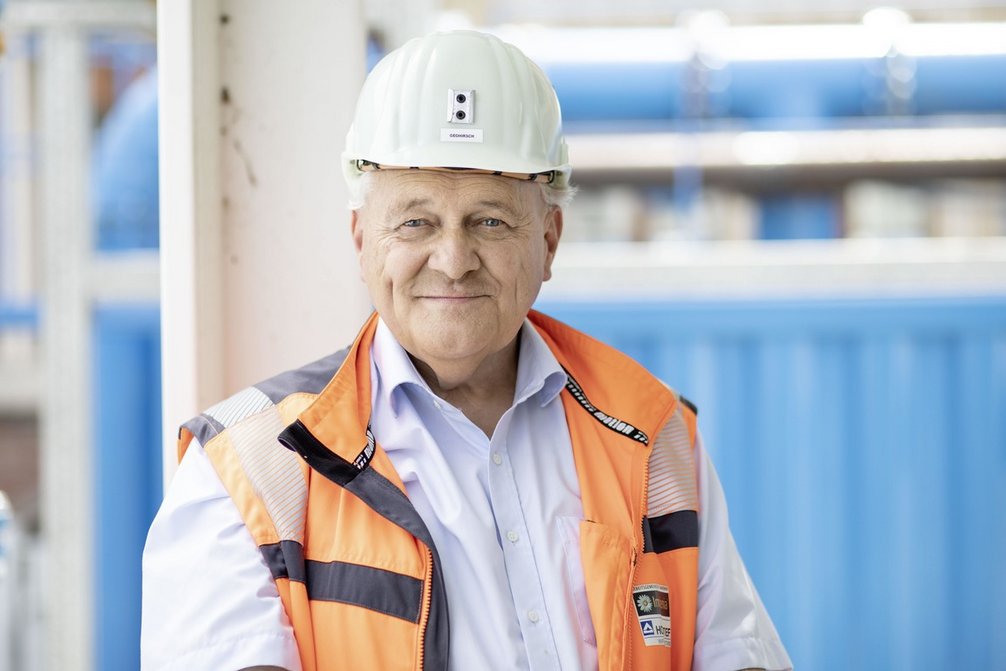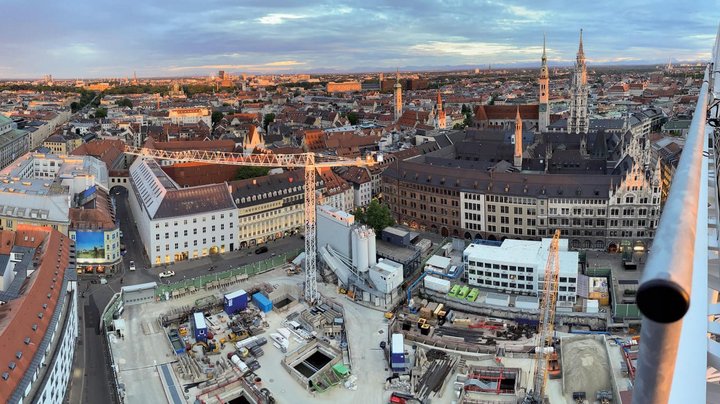What's beautiful about building the wrong way around?

What is the biggest challenge in building the Marienhof S-Bahn station in the middle of Munich?
The logistics! For this technically demanding project in a very confined space, we have a situation where access and departure routes are limited. In addition, the construction site is located in a business district with many residents. It helps that I have already built a lot in Munich and have a good network of contacts.
"We are building mostly underground and literally keeping the noise under a lid."
Hermann Hirsch, geotechnical site manager

How do you keep noise pollution in check?
We build mostly underground and literally keep the noise under a lid. This works thanks to the lid construction method: First, we concrete a lid on the surface and leave openings. Then we dig down through the openings into the ground and repeatedly insert intermediate ceilings until we reach a depth of 42 meters. This minimizes noise pollution for the surrounding area and at the same time has the advantage that people are protected from extreme heat and cold while working.
So you're building something like a skyscraper, but from the surface of the earth to the depths?
Yes - and then back again. When we get to the bottom, we start at the bottom and build the outer walls and an inner shell. In the end, building is the wrong way around; instead of starting with the floor slab, we start with the ceiling.
What is particularly fun about this project?
We have a great team in this joint venture with HOCHTIEF. And then it's nice to work at the Marienhof: Here you have butcher shops, bookstores, and a good baker right next to the workplace - that's already very pleasant!
The Marienhof Project
What is your specific job?
I work here on the construction site as a geotechnical site manager. I'm actually a civil engineer, but I've been involved in geotechnical engineering for many decades during subway construction in Munich and Vienna. Roughly speaking, I look after soil and water and try to summarize all the findings on these topics during the construction period and make them available to the planners so that they can incorporate the conclusions into the construction project.
What is the soil like in Munich?
Actually not unusual - I already know it from previous projects and there have been no big surprises so far. The difference is that when we were building the subway, we dug down to a depth of 25 meters. Now we're at 42 meters, breaking new ground, seeing what no one has seen before - that's actually the interesting thing.
How long have you been with Implenia?
I'm 63 years old and have been with Implenia for 31 years, or rather with Bilfiger before the takeover. For most of that time, I was in charge of subway construction in Munich and Vienna as a site manager and senior site manager. Now I'm the geotechnical site manager here on the construction site. This will probably be my last project before retirement in two years.



